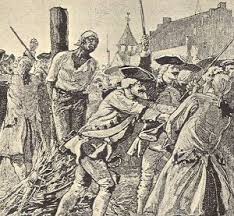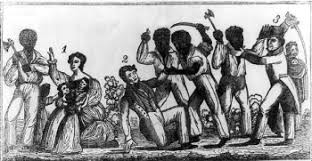The Stono rebellion, recognised as the first slave revolt, took place on September 9th, 1739, in the British colony of South Carolina.
This rebellion that led to the death of 60 people was led by Jenny, an Angolan who assembled about 20 enslaved people on the banks of the Stono River to revolt. This number eventually grew to over 100 as the march progressed.

They broke into Hutchinson’s store, a firearms store, and made away with some of the arms. Then they marched, armed with guns, to demand their freedom. As they marched, some overseers were killed, and other enslaved people joined their revolt. However, white colonists killed most of them and sold the survivors when the protesters reached the Edisto River.

A few of the escaped survivors were tracked and executed or sent to their masters while awaiting trials. Some were flogged too. Those enslaved people who saved their masters were rewarded.
It’s still under speculation what might have triggered the revolt, but it brought about changes, including the passage of the Negro Act of 1974. The revolution also forced the South Carolina authorities to reduce triggers and improve the quality of living of these enslaved people.
The South Carolina authorities began to penalise masters for brutal punishments of enslaved people and excessive workload. They also started a Christian school for enslaved people. The government prohibited the importation of more enslaved people and tightened their control over the enslaved.
